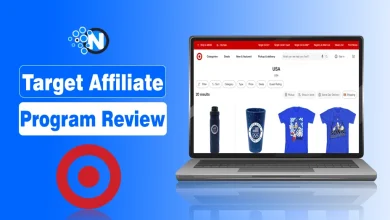The Role of Affiliate Marketing in Website Monetization

Affiliate marketing is one of the most popular and effective ways for websites to generate revenue. By partnering with brands and promoting their products or services, website owners can earn commissions on sales or leads generated through promoted affiliate links.
In this blog post, you will learn how affiliate marketing works, best strategies for selecting the right affiliate partners, optimizing content for conversions, challenges and ethical considerations involved in this monetization method.
So, let’s start!
Understanding Affiliate Marketing
How Affiliate Marketing Works
As part of your website monetization strategy, affiliate marketing is a performance-based marketing strategy where an affiliate (the website owner) earns a commission by promoting a product or service offered by a merchant (the brand or advertiser). When a visitor to the affiliate’s website clicks on a unique affiliate link and makes a purchase or completes a desired action (such as signing up for a newsletter), the affiliate earns a commission.
This model is mutually beneficial: merchants increase their reach and sales through affiliates, while affiliates earn passive income by leveraging their existing audience.

The Growth of Affiliate Marketing
Over the past decade, affiliate marketing has grown significantly, driven by the rise of e-commerce, the creation of digital content, and the increasing effectiveness of targeted marketing. According to a report by Statista, affiliate marketing spending in the United States alone is projected to reach $8.2 billion by 2022, up from $5.4 billion in 2017. This growth highlights the importance of affiliate marketing as a key revenue stream for websites across various industries.
Strategies for Selecting the Right Affiliate Partners
Aligning with Your Niche and Audience
One of the most essential factors in successful affiliate marketing is selecting the right affiliate partners. To maximize conversions and revenue, it is essential to choose products or services that align with your website’s niche and resonate with your audience.
For example, a website focused on fitness and wellness would likely see better results by promoting health supplements, workout equipment, or fitness apparel rather than unrelated products like electronics or home decor. By choosing affiliate partners whose offerings are relevant to your content and audience, you increase the likelihood of generating clicks and conversions.
Evaluating the Affiliate Program’s Terms and Conditions
Not all affiliate programs are created equal. It’s important to carefully evaluate the terms and conditions of each program before committing to a partnership. Key factors to consider include:
- Commission Rates: Understand the percentage of each sale or lead you will earn as a commission. Higher commission rates can lead to more significant earnings, but be sure to weigh this against the competitiveness and conversion potential of the product.
- Cookie Duration: This refers to the length of time that a cookie (a small piece of data stored on the user’s device) remains active after a user clicks on an affiliate link. Longer cookie durations increase the chances of earning a commission, as users may not make an immediate purchase.
- Payment Thresholds and Methods: Ensure that the program’s payment terms align with your needs. Consider factors such as the minimum payout threshold, payment frequency, and available payment methods (e.g., PayPal, bank transfer).
Researching the Merchant’s Reputation
Partnering with reputable merchants is essential for maintaining the trust of your audience and ensuring a positive user experience. Before joining an affiliate program, research the merchant’s reputation by reading reviews, checking customer feedback, and assessing their track record in delivering quality products or services.
A strong partnership with a trusted brand can enhance your website’s credibility, leading to higher engagement and conversions.
Optimizing Content for Conversions
Creating High-Quality, Relevant Content
Content is the backbone of affiliate marketing success. To drive conversions, your content must be informative, engaging, and relevant to your audience. Focus on creating content that provides value, such as product reviews, comparison articles, how-to guides, and listicles that feature your affiliate products or services.
For example, a tech blog could create a “Top 10 Gadgets for 2024” article, including affiliate links to each product. By offering genuine insights and detailed information, you build trust with your audience, increasing the likelihood that they will click on your affiliate links and make a purchase.
Integrating Affiliate Links Naturally
The placement of affiliate links within your content is crucial for maximizing conversions. Rather than overwhelming your audience with multiple links, aim for a natural and seamless integration that enhances the user experience.
Use anchor text that clearly indicates the purpose of the link, such as “Check out this fitness tracker on Amazon” rather than generic phrases like “click here.” Additionally, consider placing affiliate links in locations where users are most likely to engage with them, such as within the body of the content, in a call-to-action at the end of an article, or within product images.
Utilizing SEO to Drive Traffic
Search engine optimization (SEO) plays a vital role in driving organic traffic to your affiliate content. By optimizing your website for relevant keywords, you can attract users who are actively searching for information or products related to your niche.
Focus on keyword research to find out high-intent search terms, and use these keywords naturally into your content, headings, meta descriptions, and URLs. According to a popular phrase “Content is King”, you should create high quality, informative and authentic content to deliver value to the readers.
Furthermore, consider optimizing your content for voice searches and mobile devices, as these trends continue to grow.

Challenges and Ethical Considerations in Affiliate Marketing
Managing Conflicts of Interest
One of the potential challenges in affiliate marketing is managing conflicts of interest. As an affiliate, there may be a temptation to prioritize products or services that offer the highest commissions, even if they are not the best fit for your audience.
To maintain credibility and trust, it is essential to be transparent with your audience about your affiliate relationships. Disclose the use of affiliate links clearly, and prioritize promoting products that you genuinely believe in and that align with your audience’s needs and interests.
Navigating Competition and Market Saturation
As affiliate marketing becomes more popular, the competition among affiliates can increase. In some niches, the market may become saturated with similar content and offers, making it challenging to stand out and attract conversions.
To overcome this challenge, focus on differentiating your content by offering unique perspectives, in-depth reviews, and personalized recommendations. Additionally, consider exploring untapped niches or emerging trends where competition may be less intense.
Concluding Lines
Affiliate marketing is a powerful and effective way for websites to monetize their content while providing value to their audience. By selecting the right affiliate partners, optimizing content for conversions, and navigating the challenges and ethical considerations essential in this monetization strategy, website owners can build a sustainable and profitable income stream.
As the digital landscape is evolving rapidly, staying informed about best practices and adapting to changes in the industry will be key to maintaining success in affiliate marketing. By prioritizing transparency, quality content, and user experience, affiliates can thrive in this dynamic and lucrative space.



